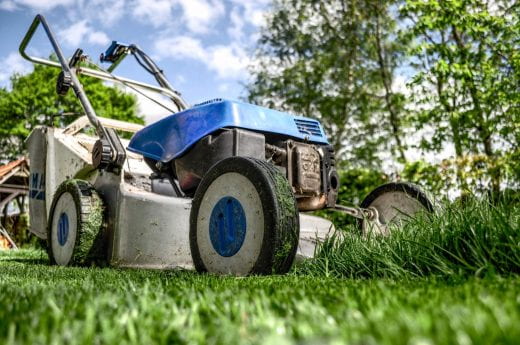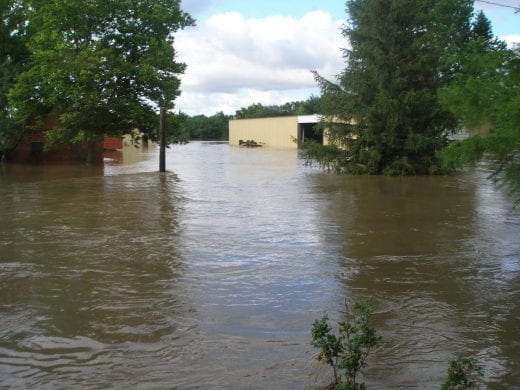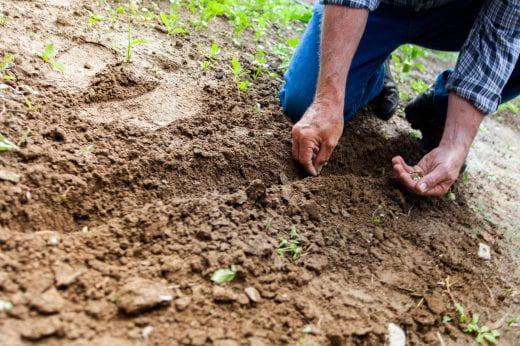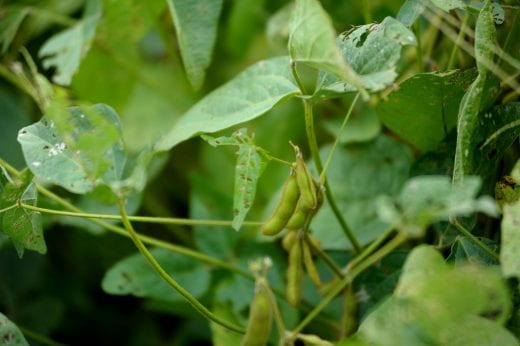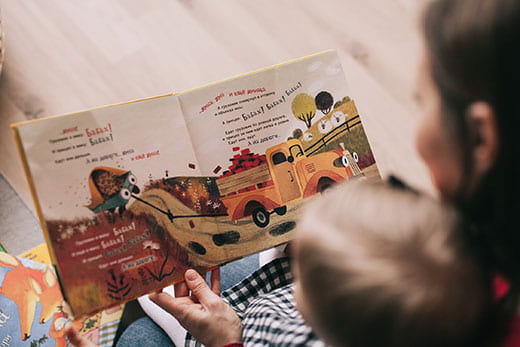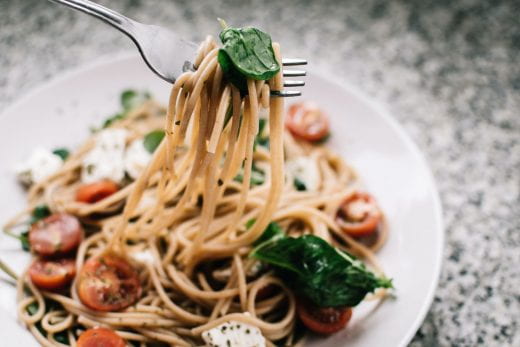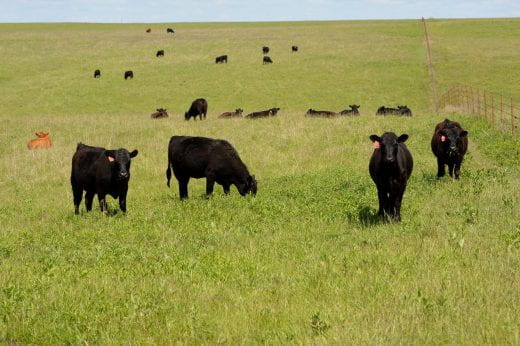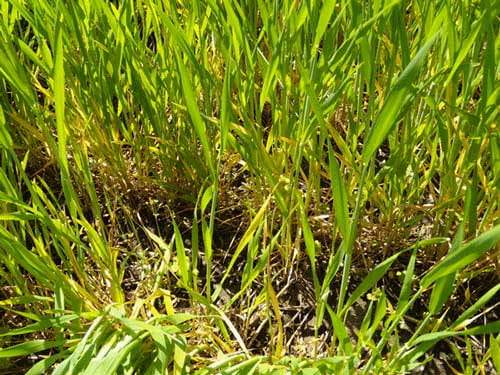Today in Better Kansas, we explore becoming a volunteer weather reporter, a unique crossword puzzle, an activity to do with children, the fascinating praying mantis (plus Rally Mantis), freeze damage to wheat, and managing backyard chickens. This is a tiny glimpse of what K-State Research and Extension across the state has to offer. Forward to your friends and family, share on social media and subscribe! – Mary Lou Peter mlpeter@ksu.edu
Better Living, Better Communities
 ARE YOU FASCINATED BY THE WEATHER? Consider becoming a volunteer weather reporter through CoCoRaHs, the Community Collaborative Rain, Hail and Snow Network. It’s a non-profit network of volunteers of all ages and backgrounds, working together to measure and map precipitation in the form of rain, hail or snow. Volunteers from across the United States and several other countries measure precipitation and input the data on the network’s website. This would be a fantastic family project. The data is used by the National Weather Service, meteorologists, emergency managers and others. Learn about CoCoRaHs through the Weather Data Library based at Kansas State University.
ARE YOU FASCINATED BY THE WEATHER? Consider becoming a volunteer weather reporter through CoCoRaHs, the Community Collaborative Rain, Hail and Snow Network. It’s a non-profit network of volunteers of all ages and backgrounds, working together to measure and map precipitation in the form of rain, hail or snow. Volunteers from across the United States and several other countries measure precipitation and input the data on the network’s website. This would be a fantastic family project. The data is used by the National Weather Service, meteorologists, emergency managers and others. Learn about CoCoRaHs through the Weather Data Library based at Kansas State University.
 LOOKING FOR SOMETHING TO KEEP THE CHILDREN OCCUPIED OR TO WORK ON WITH THEM? Or maybe you just enjoy crossword puzzles. In looking for something else, I happened upon this energy crossword puzzle on the Kansas Energy Program’s webpage that I thought you might like. Also, on the page are energy-related resources for small businesses, teachers, government facilities and programs for wind and solar power. The Kansas Energy Program is a collaboration between K-State, the Kansas Corporation Commission, the U.S. Department of Energy and the National Renewable Energy Laboratory.
LOOKING FOR SOMETHING TO KEEP THE CHILDREN OCCUPIED OR TO WORK ON WITH THEM? Or maybe you just enjoy crossword puzzles. In looking for something else, I happened upon this energy crossword puzzle on the Kansas Energy Program’s webpage that I thought you might like. Also, on the page are energy-related resources for small businesses, teachers, government facilities and programs for wind and solar power. The Kansas Energy Program is a collaboration between K-State, the Kansas Corporation Commission, the U.S. Department of Energy and the National Renewable Energy Laboratory.
 A FEW WEEKS AGO, I MENTIONED SUDDENLY IN CHARGE, a new place to find a lot of resources available for teens, tweens or anyone taking care of young children. And since I wrote about it last time, numerous new resources have been added including one on Community Outreach, with suggestions for making May Day baskets or something similar at other times of the year. Consider including a roll of toilet tissue! Sometimes, we need a reminder about the little things that go a long way toward staying connected and showing we care – especially important right now. If you’re reading this after May Day, any day is good for you and the children you’re caring for to show your appreciation for others – what a lesson for those kiddos. The resource is available in English and Spanish.
A FEW WEEKS AGO, I MENTIONED SUDDENLY IN CHARGE, a new place to find a lot of resources available for teens, tweens or anyone taking care of young children. And since I wrote about it last time, numerous new resources have been added including one on Community Outreach, with suggestions for making May Day baskets or something similar at other times of the year. Consider including a roll of toilet tissue! Sometimes, we need a reminder about the little things that go a long way toward staying connected and showing we care – especially important right now. If you’re reading this after May Day, any day is good for you and the children you’re caring for to show your appreciation for others – what a lesson for those kiddos. The resource is available in English and Spanish.
Better Farming, Ranching and Gardening
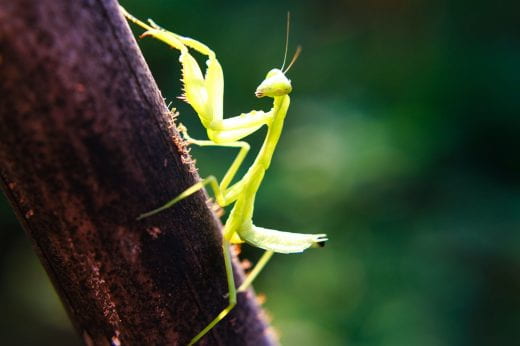 BUG SEASON IS BACK! Entomologists would likely say it never left, but we are sure to have more face-to-face activity now that the weather is warming. An interesting one is what the scientists call the praying mantid, known to the rest of us as the praying mantis. Apparently, they’re not very picky about what they eat, which makes them a good companion (but not for other insects) to have in the garden. Check out the praying mantid section of the April 24, 2020 Kansas Insect Newsletter. You can actually buy praying mantis egg cases?!? Anybody remember Rally Mantis, the KC Royals short-lived (literally) mascot? A brief moment of fun in an otherwise disappointing season. I even had a Rally Mantis T-shirt. Who knew I’d ever be writing about this?!
BUG SEASON IS BACK! Entomologists would likely say it never left, but we are sure to have more face-to-face activity now that the weather is warming. An interesting one is what the scientists call the praying mantid, known to the rest of us as the praying mantis. Apparently, they’re not very picky about what they eat, which makes them a good companion (but not for other insects) to have in the garden. Check out the praying mantid section of the April 24, 2020 Kansas Insect Newsletter. You can actually buy praying mantis egg cases?!? Anybody remember Rally Mantis, the KC Royals short-lived (literally) mascot? A brief moment of fun in an otherwise disappointing season. I even had a Rally Mantis T-shirt. Who knew I’d ever be writing about this?!
 THIS IS THE TIME OF YEAR WHEN BABY CHICKS CAN OFTEN BE FOUND at farm stores and other locations, but recent stories in the New York Times and others indicate that chicks are in greater demand this year than usual. Apparently, we want to buy chicks during stock market downturns and presidential election years… there’s an appeal to gathering our own eggs rather than hope the grocery store has them – not always a sure thing during this pandemic. If you’re among the lucky people who recently bought or are raising a few chickens, Management of the Small Flock of Chickens will come in handy. Also, take a look at the poultry page on K-State’s Department of Animal Sciences and Industry page for information on poultry and what the university does to help producers, from large scale operations to your own backyard flock. I just learned that crooked toes can be caused by a riboflavin deficiency – in chickens, mind you!
THIS IS THE TIME OF YEAR WHEN BABY CHICKS CAN OFTEN BE FOUND at farm stores and other locations, but recent stories in the New York Times and others indicate that chicks are in greater demand this year than usual. Apparently, we want to buy chicks during stock market downturns and presidential election years… there’s an appeal to gathering our own eggs rather than hope the grocery store has them – not always a sure thing during this pandemic. If you’re among the lucky people who recently bought or are raising a few chickens, Management of the Small Flock of Chickens will come in handy. Also, take a look at the poultry page on K-State’s Department of Animal Sciences and Industry page for information on poultry and what the university does to help producers, from large scale operations to your own backyard flock. I just learned that crooked toes can be caused by a riboflavin deficiency – in chickens, mind you!
 PORTIONS OF THE WHEAT STATE (OTHERWISE KNOWN AS KANSAS!) experienced freezing weather in mid-April, which injured some of the crop. The wheat was in different stages of development in various parts of the state, which makes a difference to the freeze’s effect. The variety of wheat planted back in the fall also made a difference, with some varieties that came out of dormancy earlier this spring showing more damage than those that came out later. The April 24, 2020 Agronomy eUpdate gets into the nitty gritty. As of April 26, USDA’s National Agricultural Statistics Service rated Kansas winter wheat as 5% excellent, 35% good, 40% fair, 15% poor and 5% very poor. The Agronomy eUpdate also includes information about soybean planting, including recommendations for planting dates, effect of row spacing on crop yield and more.
PORTIONS OF THE WHEAT STATE (OTHERWISE KNOWN AS KANSAS!) experienced freezing weather in mid-April, which injured some of the crop. The wheat was in different stages of development in various parts of the state, which makes a difference to the freeze’s effect. The variety of wheat planted back in the fall also made a difference, with some varieties that came out of dormancy earlier this spring showing more damage than those that came out later. The April 24, 2020 Agronomy eUpdate gets into the nitty gritty. As of April 26, USDA’s National Agricultural Statistics Service rated Kansas winter wheat as 5% excellent, 35% good, 40% fair, 15% poor and 5% very poor. The Agronomy eUpdate also includes information about soybean planting, including recommendations for planting dates, effect of row spacing on crop yield and more.
_
For more resources and activities, contact the K-State Research and Extension office in your area. Check out our other blogs and subscribe to our weekly emails here: https://www.ksre.k-state.edu/news/blogs/




